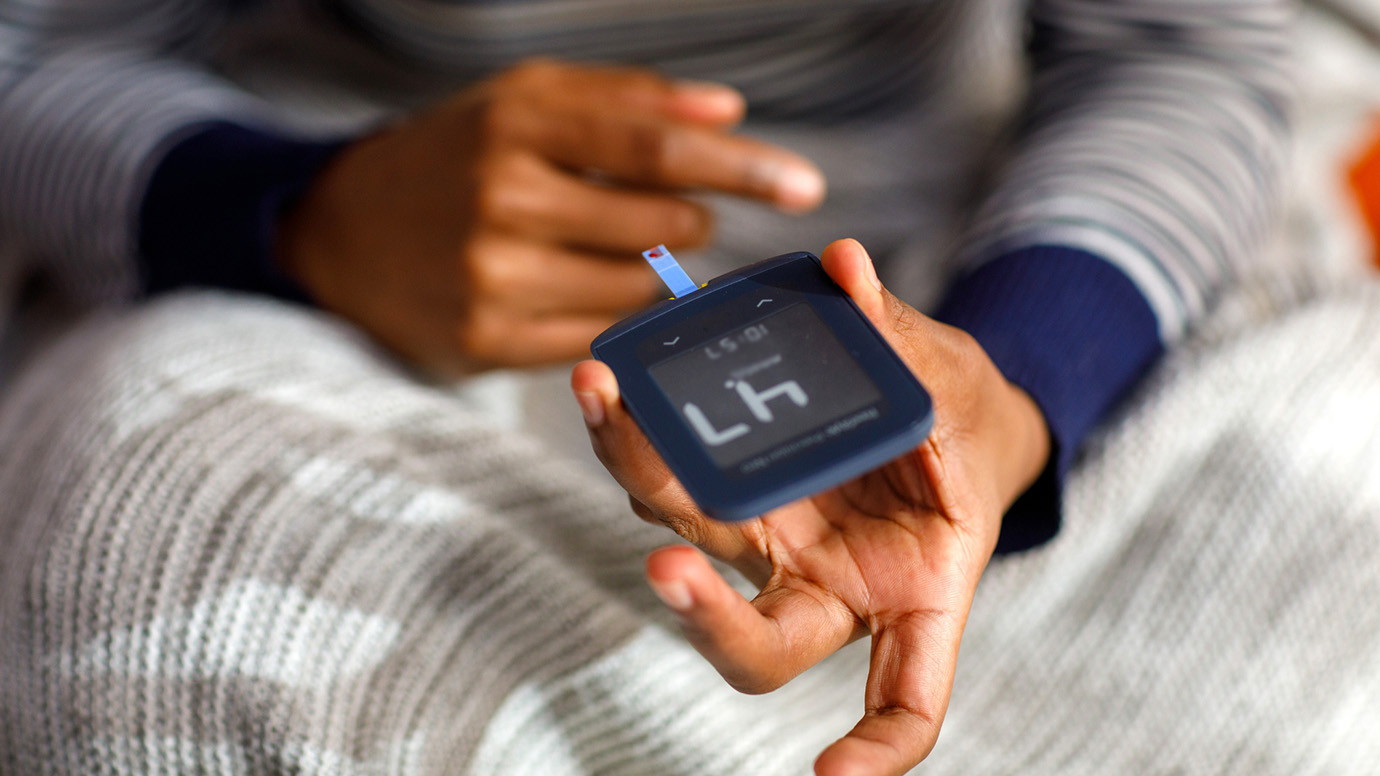T1D in Under-Resourced Countries: Life for a Child’s Vision for the Future
Written by: Alexi Melvin
4 minute read
November 17, 2021
Life for a Child supports young people living with diabetes in some of the world’s most vulnerable communities. In addition to the story shared below, read more about their work supporting young people like Rwandan sisters Ineza and Rebeka at ToClimbAThousandHills.org.
Beyond Type 1 was delighted to host a webinar, which you can view here. We wanted to introduce our community to Life for a Child—an outstanding organization that is contributing to the global diabetes community, particularly youth with type 1 diabetes (T1D) in under-resourced countries.
Making an Impact Together
Thom Scher, president & CEO of Beyond Type 1 kicked off the event by noting the importance and impact of the Beyond Type 1 / Life for a Child partnership.
Thom, having joined Life for a Child’s Steering Committee in 2020, acknowledged that the combined efforts that the two organizations are embarking on together is more important than ever. This cherished partnership aims to spread awareness about the incredible impact that Life for a Child is having on T1D youth in these under-resourced countries.
Thom then introduced Dr. Graham Ogle, general manager for the Life for a Child program, who is also a pediatric endocrinologist has worked in Papua New Guinea and Cambodia and has been with Life for a Child since its inception in 2000.
Graham was joined by Emma Klatman, global policy & advocacy manager for Life for a Child, who began her work in diabetes advocacy when she was diagnosed with T1D in 1999.
The Awful Truths
Graham spoke about the gravity of being diagnosed with type 1 diabetes in a low-resource country. Dying even before diagnosis is common due to misdiagnosis. Ketoacidosis is very uncommon in these countries and can be mistaken for a chest infection, gastroenteritis, malaria, or ectopic pregnancy.
It is estimated that there are at least 1.1 million people under the age of 20 with T1D, and around 300,000 of these are in need of immediate support. A 1999 study in the West African nation Mali showed that 18 of 20 children with type 1 diabetes died within three years.
The spotlight then turned to a Life for a Child study that showed it was very rare for lower-income governments to provide insulin to young people with diabetes. It was even rarer for governments in these settings to provide test strips.
Providing Necessary Support & Education
Life for a Child’s vision is that no child should die of diabetes. To date, the program is helping at least 26,000 young people in 44 countries.
So, what kind of support is provided? The answer depends on what the needs are in each specific country, but it usually includes:
- Insulin syringes
- Meters and test strips
- A1c testing
- Training of health professionals on diabetes education
- Complication screening
- Transport costs & communications
- Capacity building
- Technical advice
- Diabetes camps
Since the French Malian NGO Santé Diabète and Life for a Child commenced mutual support, there are now over 900 young people alive with diabetes in Mali. More young people are being diagnosed with diabetes because more cases are being recognized, and therefore, more are able to survive.
Graham emphasized that diabetes education is critical. There are many materials in a multitude of languages that are being developed and expanded upon on the Life for a Child website.
With the aid of the International Society for Pediatric and Adolescent Diabetes, Life for a Child has created a pocketbook with crucial guidelines for doctors and other health professionals in under-resourced countries to follow when they encounter a child with diabetes.
Life for a Child: Moving Forward
Emma explained that in 2021, Life for a Child announced “Vision 2030,” an expansion that will see support increase from helping 23,000 young people in 43 countries to 150,000 young people in 65 countries.
The second piece of Vision 2030 is improving the level of type 1 diabetes care for supported young people. This involves improving access to modern insulin regimens and increasing provision of blood glucose test strips, so young people can carry out more frequent daily monitoring. It also involves the advancement of healthcare professional training, family education and peer support. The last element of Vision 2030 is encouraging sustainability by implementing research and evidence-based advocacy initiatives that encourage country-level sustainability.
How to Get Involved
Emma took a moment to explain the best ways to get involved with Life for a Child. These ways include:
- Becoming a donor, either on a one-time basis or recurring.
- Telling the world about Life for a Child’s work by sharing social media posts and spreading the word among your family and friends.
- Visiting the LFAC website and voting in the art competition, where children and young adults have created artworks depicting their lives with diabetes.
- Getting creative and starting our own fundraising initiatives, such as running challenges or school events.
The virtual event was wrapped up with some questions from viewers, and a thoughtful “thank you” from Thom to the incredible Life for a Child team.
Life for a Child believes that no child should die of diabetes. Find out how you can help support young people living with diabetes in some of the world’s most vulnerable communities at https://lifeforachild.org/help/

Author
Alexi Melvin
Alexi Melvin serves as chair of the Leadership Council’s Content Committee. She is a journalist who has written for The San Francisco Chronicle, Beyond Type 1 and other digital publications. Alexi is also a voiceover actor and reiki master. In addition to her dedication to being a voice for people living with type 1 diabetes (T1D) everywhere, she has always been passionate about meditation and energy healing. Before getting her Bachelor of Arts degree at The New School University, she studied acting at the Lee Strasberg Institute. She hopes to continue her healing work, and to connect with other T1Ds through her travels and writing opportunities.
Related Resources

If you have diabetes, you know insulin affects low blood sugar (hypoglycemia), but it’s not...
Read more

Living with diabetes, you know that low blood sugar can be dangerous and needs quick...
Read more

At just 17, Collin Lloyd is making a name for himself in karting—on and off...
Read more

